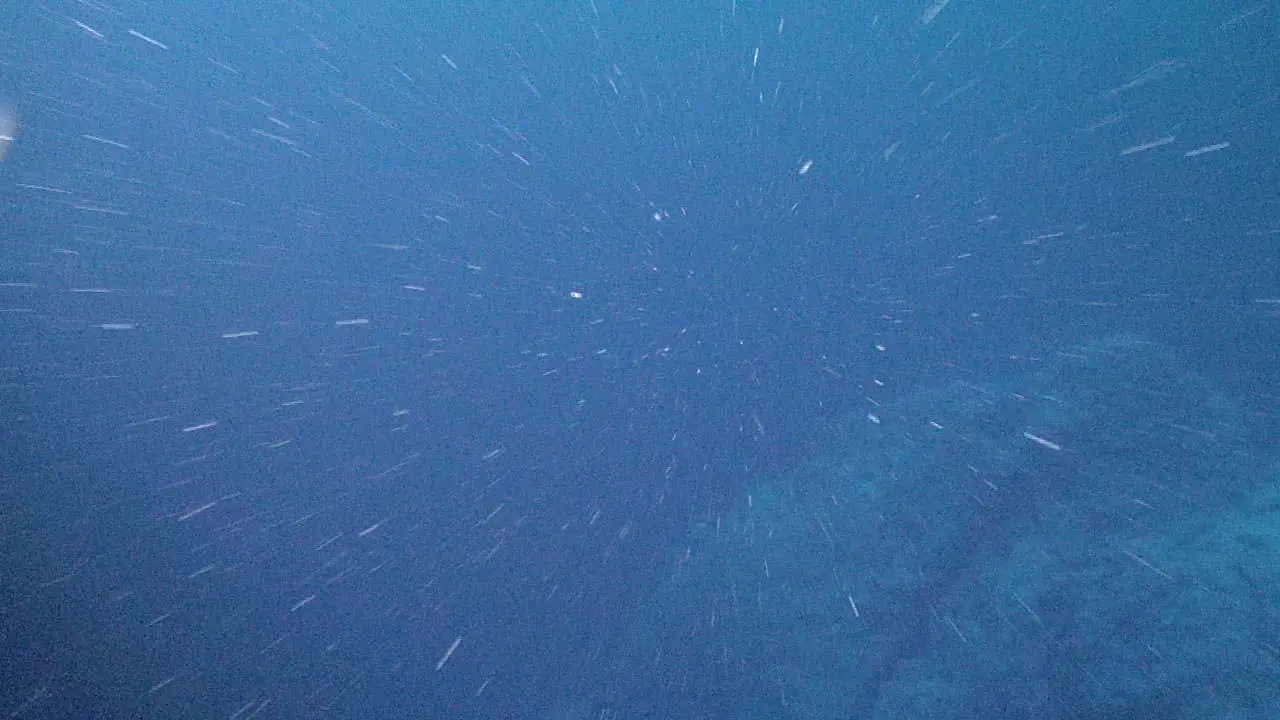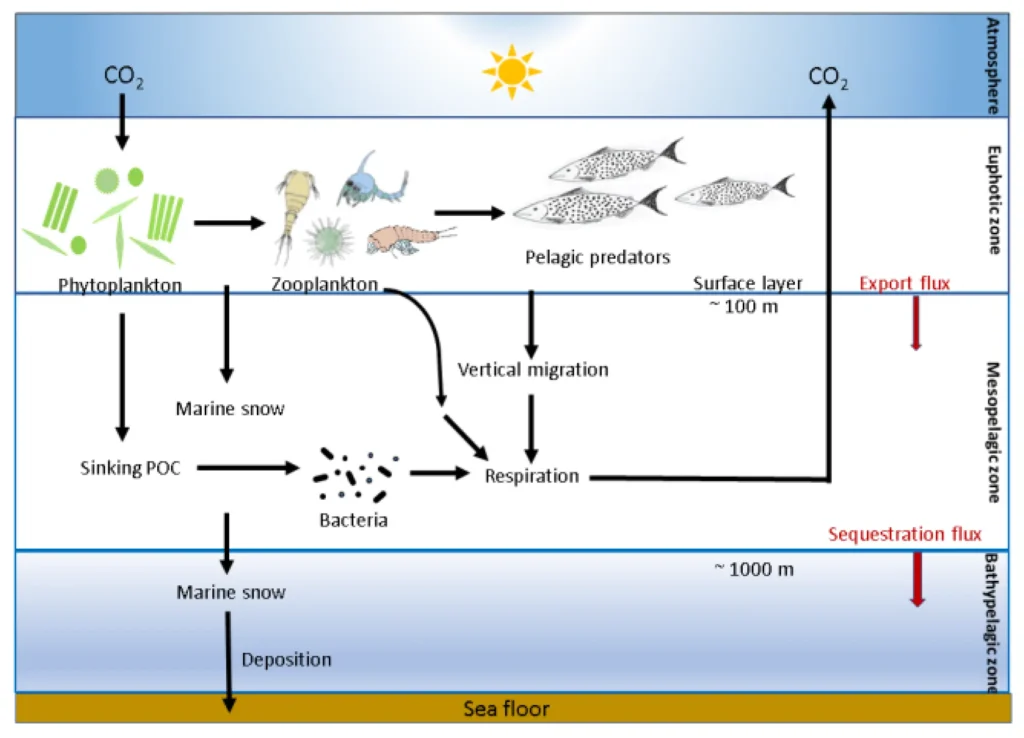Physical Address
304 North Cardinal St.
Dorchester Center, MA 02124

In the sunless depths of the ocean, where light never penetrates and life seems improbable, a phenomenon known as marine snow serves as a lifeline for countless organisms. This continuous shower of organic particles, drifting like snowflakes through the water column, is a vital component of the ocean’s ecosystem. Though delicate and often unseen, marine snow connects the surface and deep-sea worlds in ways that are both intricate and essential.
Marine snow is a term used to describe the steady descent of organic material from the ocean’s surface to its depths. Composed of decomposing plant and animal matter, mucus, fecal pellets, and other microscopic debris, these particles aggregate as they sink, forming flake-like clusters.
The “snow” begins its journey near the surface, originating primarily from phytoplankton blooms and the remains of zooplankton, fish, and other organisms. As these particles drift downward, they serve as a mobile feast, sustaining life in some of the planet’s most inhospitable environments.
The creation of marine snow begins with the activity of primary producers like phytoplankton, which convert sunlight and nutrients into energy. When phytoplankton die, their cells break apart, forming the foundational particles of marine snow. Zooplankton and other animals that feed on phytoplankton further contribute through their waste products, which often become sticky and aggregate with other debris.
These clumps are bound together by “marine mucilage,” a gel-like substance produced by microorganisms. The stickiness of this mucilage causes particles to clump together, increasing their size and weight, which accelerates their journey to the ocean floor.
In the deep ocean, where photosynthesis is impossible, marine snow is the primary source of energy for life. Without it, deep-sea organisms would struggle to survive.

The journey of marine snow is fraught with challenges. Most of it is consumed or decomposed before reaching the seafloor. Studies suggest that only about 1-5% of the organic material produced at the surface reaches the abyssal depths, often thousands of meters below.
However, what does reach the ocean floor becomes part of the sediment, forming layers that accumulate over millennia. These sediments provide a historical record of the planet’s climate and biological activity, offering invaluable insights for scientists.
Many deep-sea organisms have evolved unique adaptations to capitalize on this limited food supply. For instance:
Human activities, particularly overfishing, pollution, and climate change, threaten the delicate processes that create marine snow. Changes in ocean temperatures, nutrient cycles, and plankton populations can disrupt its formation, potentially starving deep-sea ecosystems.
Additionally, microplastics have been found mingled with marine snow particles, introducing toxins to deep-sea organisms that rely on this food source. Understanding and mitigating these impacts is essential to preserving the ocean’s health.
Despite its fragile appearance, marine snow is a cornerstone of oceanic life. It connects the surface and abyssal ecosystems, drives carbon cycling, and sustains diverse life forms in environments where survival seems impossible.
Moreover, marine snow highlights the interconnectedness of Earth’s systems, demonstrating how surface-level processes influence the deepest reaches of the planet. Its study offers not only ecological insights but also clues about how life might persist in extreme environments beyond Earth, such as on ocean worlds like Europa or Enceladus.
Marine snow is far more than a poetic metaphor; it is a lifeline for the deep ocean and a vital player in the Earth’s carbon cycle. Its silent descent sustains life in the abyss, connects surface and deep-sea ecosystems, and even helps mitigate climate change.
For those who seek to understand the ocean’s mysteries, marine snow offers a glimpse into the profound ways life has adapted to thrive in darkness, proving that even the smallest particles can have an outsized impact on our world.